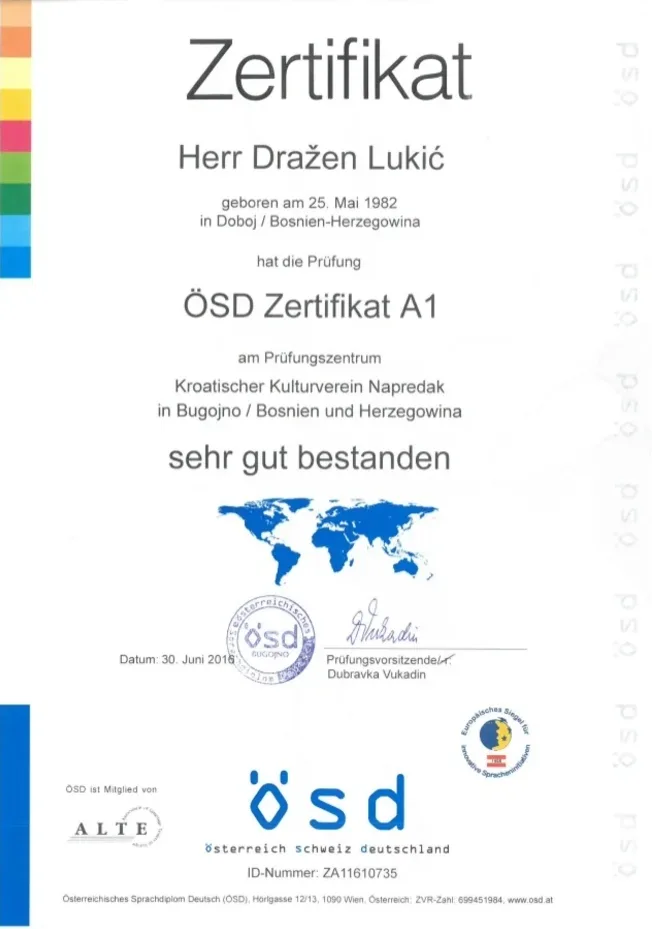Understanding the ÖSD B2 Certification: A Comprehensive Guide for German Learners
In the landscape of language qualifications, the ÖSD B2 accreditation stands out as a substantial milestone for learners of the German language. Accomplishing efficiency at this level opens numerous opportunities, both academically and professionally, while likewise improving cultural understanding and personal development. This short article aims to supply an informative introduction of the ÖSD B2 certification, detailing its significance, structure, preparation strategies, and frequently asked questions.
What is the ÖSD B2 Certification?
The ÖSD (Österreichisches Sprachdiplom Deutsch) B2 accreditation is a main language credentials that evaluates intermediate proficiency in the German language. It is particularly recognized in Austria, Germany, and Switzerland, making it a valuable possession for those planning to study or work in these nations.
At the B2 level, learners are anticipated to:
Comprehend the main points of intricate texts on both concrete and abstract subjects.
Communicate with fluency and spontaneity with native speakers.
Produce clear, comprehensive texts on a large range of subjects associated to their interests.
Why is the ÖSD B2 Certification Important?
Academic Opportunities: Many universities in German-speaking nations require a minimum of B2-level efficiency for admissions, especially for courses taught in German.
Professional Advantages: Employers often look for prospects with acknowledged language qualifications, and B2 efficiency shows the ability to interact efficiently in professional settings.
Cultural Integration: Achieving this level can deepen one's understanding of German culture, society, and subtleties of daily language.
Structure of the ÖSD B2 Exam
The ÖSD B2 evaluation consists of four main elements: Listening, Reading, Writing, and Speaking. Each section evaluates different competencies within the language ability.
1. Listening Comprehension
In this section, test-takers listen to numerous audio clips such as conversations, news reports, and discussions. They are required to address concerns that determine their understanding of content, tone, and ramifications.
2. Reading Comprehension
This part consists of various written materials like articles, advertisements, and emails. Candidates need to show their capability to comprehend the context and crucial ideas, along with interpret different types of texts.
3. Writing
Prospects are asked to compose a text based upon a specific subject, often requiring structured arguments and coherent thinking. This could include composing essays, reports, or formal letters.
4. Speaking
The speaking evaluation normally includes two parts: a monologue and a dialogue with an examiner. Test-takers should communicate efficiently, reveal opinions, and respond to concerns plainly.
Scoring System
Each element is scored separately, and to pass, prospects usually must achieve a typical rating across all sections. The grading requirements concentrate on language efficiency, coherence, fluency, and the capability to take part in discussion.
Preparation Strategies for ÖSD B2
Getting ready for the ÖSD B2 exam can be a requiring yet satisfying undertaking. Here are some effective strategies that can enhance your preparation:
1. Familiarize Yourself with the Exam Format
Evaluation previous exam documents to comprehend the types of concerns and jobs involved.
Tape-record yourself throughout practice speaking sessions to enhance fluency and articulation.
2. Develop Your Vocabulary
Create vocabulary lists based on common themes for the B2 level, such as Work, Environment, and Health.
Usage flashcards and language apps to enhance knowing.
3. Practice Listening Skills
Listen to German podcasts, news stations, and audiobooks that include a series of topics and accents.
Engage in routine conversation practice with native speakers, either personally or online.
4. Take Mock Exams
Replicate exam conditions by taking practice tests within the allocated time limitations.
Examine your performance to recognize locations for enhancement.

5. Join Study Groups
Collaborate with fellow students to practice speaking and exchange resources.
Engage in discussions that challenge your understanding of complex topics.
Common Questions about ÖSD B2
FREQUENTLY ASKED QUESTION
Q1: How long is the ÖSD B2 accreditation valid?
A1: The ÖSD B2 certificate does not end, but it is a good idea to keep your language abilities upgraded through continuous practice and use.
Geothe Zertifikat 4 All : What resources are suggested for getting ready for the ÖSD B2 exam?
A2: Books particularly designed for B2 preparation, online courses, language exchange platforms, and main ÖSD practice products are suggested for effective study.
Q3: Where can I take the ÖSD B2 exam?
A3: The ÖSD B2 exam can be taken at various language schools, universities, and ÖSD evaluation centers worldwide. It's recommended to look for scheduled dates in your area.
Q4: What if I fail the exam?
A4: Candidates can retake the ÖSD B2 exam as sometimes as required to achieve the wanted outcome. Nevertheless, it's often helpful to take some time to enhance language abilities before reattempting.
Conclusion
The ÖSD B2 certification represents a crucial action in the journey of mastering the German language. By comprehending the structure of the exam, using reliable preparation methods, and using offered resources, students can enhance their efficiency and accomplish their language objectives. Ultimately, the advantages of obtaining the B2 certificate extend beyond academia and employment, enriching the cultural and social experiences of those who aim to find out German. Starting this journey is not almost passing an exam; it's about welcoming a language that opens doors to new chances and experiences.
